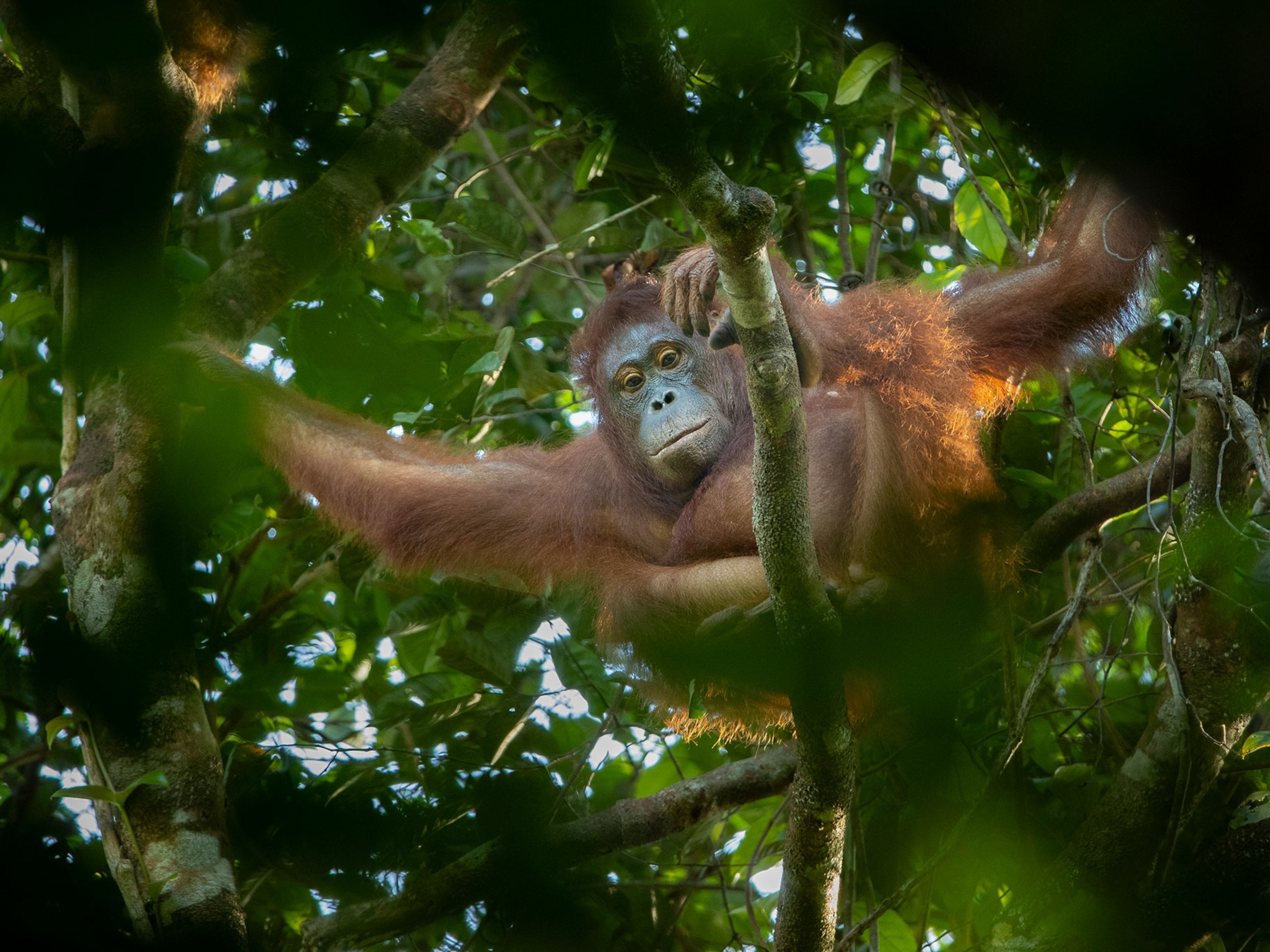
Bet You’ve Never Heard of This Shy, Colorful Monkey
Drill monkeys share a colorful feature with their cousin the mandrill.
Ever meet someone so charismatic you wonder: why aren’t you famous?
That’s how I feel about the drill monkey. I just "discovered" them, prompting this Weird Animal Question of the Week: So, what’s the drill? And where has this monkey been all our lives?
Show Your Colors
Drills are shy, live in only one small, remote area of Africa, and their faces aren’t as colorful as their cousin the mandrill, whose blue-and-red mugs make them instantly recognizable. Because of that, mandrills may have been historically more likely to be displayed in zoos, making them more well known to the general public, says Kathy Wood of Tengwood Organization, a primate conservation group with a focus on drills.
But drills are no slackers in the drama department.
Drills have pitch-black faces surrounded with white fringe, which look massive in males because of fatty cheek pads that mandrills don't have, says New York University anthropologist James Higham via email. This striking contrast is finished off by a slash of red under their lower lip that looks like strangely placed lipstick.
Still, they save the best for the end—the rear end—which is as colorful as an Easter basket.

“The genitals of males are red and lilac,” Higham says. “On their rump there is a rainbow of lilacs, blues, and purples, similar to that seen in mandrills.” (Read "Some Monkeys Have Blue Testicles—Here’s Why.")
In a 2009 study, Higham and his colleagues showed that these colors were a sign of rank in males, with the brightest males having the highest rank.
Females are a far more subdued dusky brown color and about a third of the size of males.
There’s a lot of visual communication in the large social groups that drills live in, says Patti Frazier, primate keeper at Zoo Atlanta, which has six drills, including “the displaying of teeth, as if they were smiling, usually accompanied with their head swaying back and forth.”
Wood calls this an “appeasement grin,” and drills and mandrills use it in both calm and tense situations. Males also grin and smack their lips at females that are potential mates.
Drills and mandrills are large monkeys, weighing as much as 75 pounds—about the weight of a large golden retriever. Powerful physiques and two-inch canine teeth make the males look fierce, Frazier says, but, “in reality, drills are shy animals,” living in densely forested areas.
And their patch of Earth isn’t very big.
Drills “are found only in a small part of Africa, in Cameroon and Nigeria between the Sanaga and Cross Rivers, and on the island of Bioko, part of Equatorial Guinea,” says Higham, and studying them in their remote environment is difficult.

Hello, Goodbye?
Their low numbers are another reason they’re not well known.
“Drills are, sadly, endangered,” Higham says, and “census estimates suggest there may be only a few thousand left in the wild.” Overhunting and habitat loss are the drill’s two biggest pressures, and a 2012 study in the journal Ecology and Evolution suggested that global warming trends could be harmful as well.
In The Mandrill: A Case of Extreme Sexual Selection, Alan Dixson, a biologist at the University of Victoria, says conservation in Cameroon will be important to the future of the drills.
Hopefully they’ll be around a long time. It’s good to get to know another member of the family.
Weird Animal Question of the Week answers your questions every Saturday. If you have a question about the weird and wild animal world, tweet me, leave me a note or photo in the comments below, or find me on Facebook.





